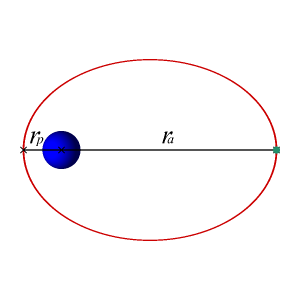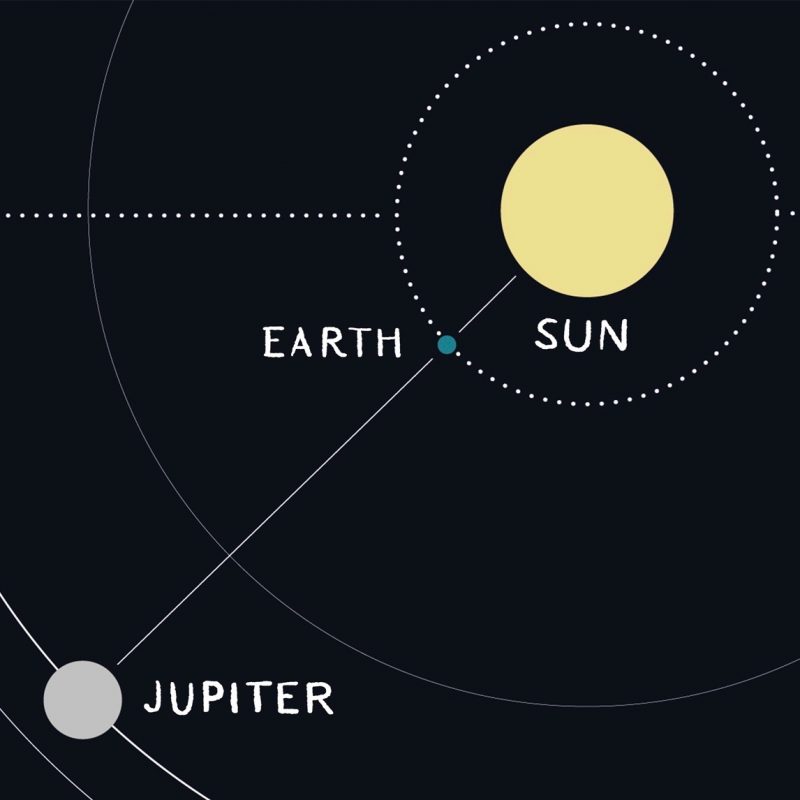

Jupiter as seen by amateur astronomer Anthony Wesley on May 19, 2019. Image via Anthony Wesley.
On June 12, 2019, at 03:00 UTC, the giant planet Jupiter will be closest to Earth for all of 2019. At its closest, Jupiter comes to within 398 million miles (641 million km).
Yet, Jupiter’s opposition happens on June 10, at 15:00 UTC. At opposition, Earth in its orbit flies between Jupiter and the sun, placing Jupiter opposite the sun in our sky.
You’d think Jupiter would be closest to Earth on the day of opposition. But it isn’t. Why not?

Opposition happens when Earth flies between an outer planet, like Jupiter, and the sun. Why aren’t Earth and Jupiter closest on the day of opposition? Illustration via Heavens Above.
Why aren’t Jupiter and Earth closest on the day of Jupiter’s opposition? They would be, if the orbits of Earth and Jupiter were perfect circles and if our two worlds orbited on the same exact plane. Both Earth and Jupiter have orbits that are very nearly circular. They go around the sun on almost the same plane. But – in both cases – not quite.
Consider that, because Jupiter’s orbit is elliptical, not circular, its distance from the sun varies. Likewise, Earth’s orbit is elliptical, not circular. Our distance from the sun varies, too.

This animation shows an orbit that’s vastly more elliptical than either Earth’s or Jupiter’s. Still, you get the idea. Perihelion = closest to sun. Aphelion = farthest from sun. Image via Brandir/Wikipedia.
Jupiter’s orbit takes 11.9 Earth-years. Earth’s orbit takes one year.
Right now, we’re headed toward a perihelion of Jupiter. In other words, every single day, Jupiter is closer to the sun than it was the day before. Are you beginning to see how it can be closer to Earth after we go between it and the sun?
Not yet? Keep reading …

View at EarthSky Community Photos. | In 2019, Jupiter is nearly in front of the broadest and brightest part of the starry band of the Milky Way, in the direction to the galaxy’s center. JV Noriega in Batangas, Philippines, captured this images of Jupiter (the bright one!) on June 8, 2019. Thank you, JV!
Jupiter passed aphelion – its farthest point from the sun in its orbit – on February 18, 2017. Jupiter will reach perihelion – its closest point – on January 25, 2023. So Jupiter is getting closer to the sun each day. And what is Earth doing?
Earth’s perihelion happens every year in early January. So Earth is getting a bit farther from the sun each day now.
Jupiter is now getting closer to the sun – bit by bit, closer and closer – every earthly day. And Earth is getting farther from the sun – bit by bit, farther and farther – every day.
And that’s how Jupiter and Earth can be closest for 2019 some one and a half days after our planet passes between Jupiter and the sun.
Understand? If not, check out these two links … or let’s talk in the comments below …
Geocentric ephemeris for Jupiter: 2019
Geocentric ephemeris for Sun: 2019
Here are those numbers again:
Jupiter’s opposition June 10 at 15:00 UTC (June 10 at 10 a.m. CDT).
Jupiter closest June 12 at 03:00 UTC (June 11 at 10 p.m CDT).

Another artist’s concept of Jupiter and Earth at opposition, when Earth passes between the sun and Jupiter.
Bottom line: You’d think Jupiter would be closest to Earth on the day we pass between it and the sun. But, in 2019, Jupiter’s opposition comes about a day and a half before its closest point to Earth. Why?
Read more: We go between Jupiter and the sun June 10, 2019
Read more: Is Jupiter’s Great Red Spot disintegrating?
Source:
https://earthsky.org/astronomy-essentials/why-jupiter-closest-after-before-opposition